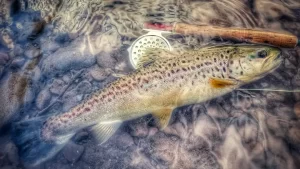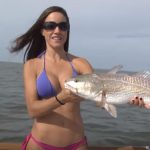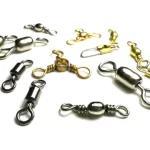There’s an old story about a young bull and an old bull standing on a hill, observing a field below. While the original tale may not be suitable for all audiences, a fly fishing version offers valuable wisdom that’s perfect for any angler.
Some lessons in fly fishing stick for a lifetime. Wisdom passed down through outdoor magazines, fishing stories, or even the quiet conversations of seasoned anglers often carries timeless truth. One particular lesson remains invaluable — the importance of patience and presence when approaching a fishing spot.

Slow Down Before the First Cast
The advice is simple: don’t rush to the water’s edge and immediately start casting. Instead, approach slowly, deliberately, and maintain a distance of about 20 feet from the shoreline.
Why 20 feet? Before any angler arrives, the water is alive with movement. Birds, insects, fish, and other wildlife go about their routines, completely unaware of human presence. But once that presence is felt, everything changes. A sudden appearance can send fish into hiding, alerting them to danger.
The Sensitive Nature of Trout
Trout are highly perceptive. They sense the slightest vibrations through their lateral lines — the same way they detect predators or sudden movements in the water. Even footsteps along the bank can create disturbances that ripple through their environment. Combined with visual cues, like birds taking flight or animals scattering, trout quickly become cautious.
Embracing the Art of Stillness
This is where the wisdom of patience becomes evident. Seasoned anglers often suggest taking a moment to sit, relax, and simply observe. An old practice, often symbolized by lighting a tobacco pipe and taking 15-20 minutes to let the surroundings settle, allows nature to resume its rhythm. The water’s inhabitants become less wary, sensing no immediate threat.
During this time, watch for rising fish, insect hatches, or subtle movements in the water. Notice the currents, feeding lanes, and natural patterns that indicate where trout may be lurking. This patient observation often reveals more than any rushed approach ever could.
Understanding the Environment
Much like how zebras remain calm around lounging lions, fish return to their normal behavior once the perceived danger passes. When anglers remain still and calm, the water once again becomes vibrant with life. This window of time offers a unique opportunity to understand the water’s story.
First Casts from Afar
After observing for 20 minutes, resist the temptation to step directly to the water’s edge. Instead, cast from a distance. Fish often linger near the bank, hidden in plain sight. Making a few initial casts before entering the water may yield unexpected rewards. Once it’s clear there’s no action near the shore, slowly wade in, maintaining a quiet presence.
A Testament to Patience
Robert Traver once wrote, “Because trout do not lie or cheat and cannot be bought or bribed, or impressed by power, but respond only to quietude and humility, and endless patience.” These words resonate deeply with those who understand the true essence of fly fishing.
This simple yet profound lesson has endured for generations. The act of waiting, observing, and understanding the water creates a connection to the sport that goes beyond the catch itself.
Take Your Fly Fishing to the Next Level
Ready to apply these time-tested strategies and become a more mindful angler? Embrace the wisdom of patience on your next fishing trip and see how it transforms your experience. Share your own observations and experiences in the comments below — the best lessons often come from the water itself.
Image/Source: SI





